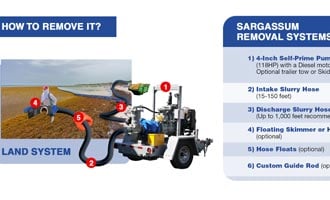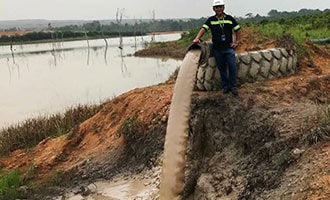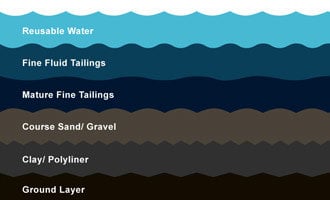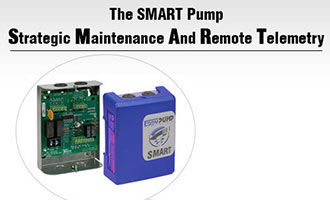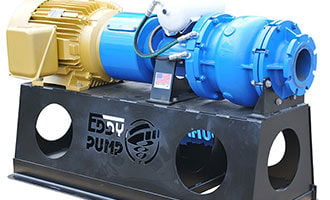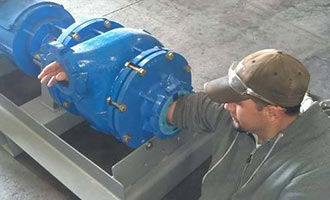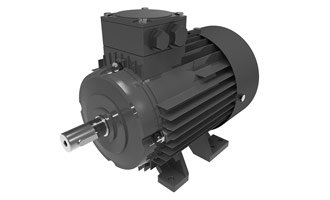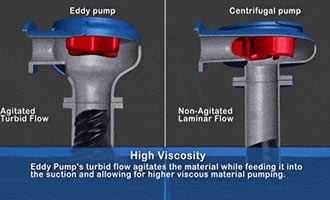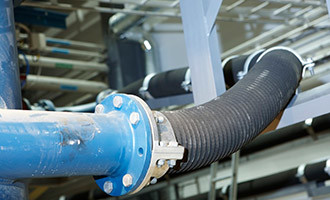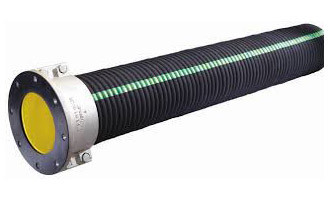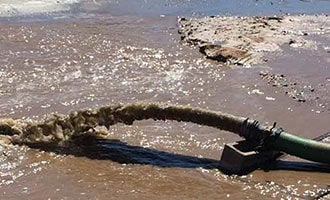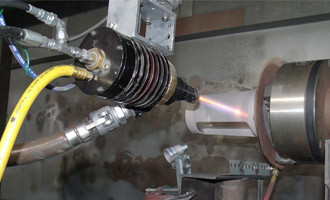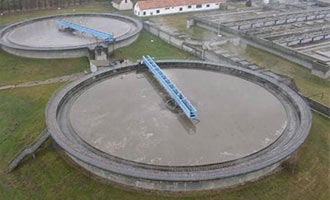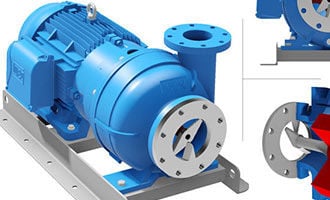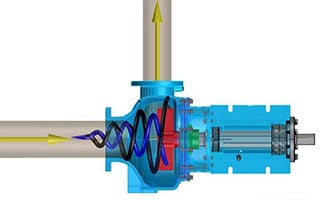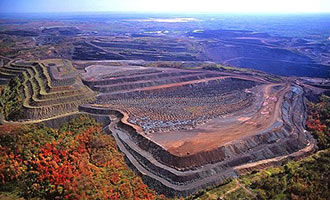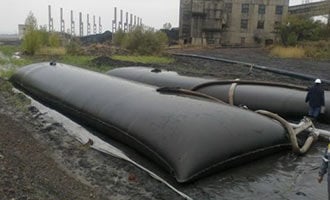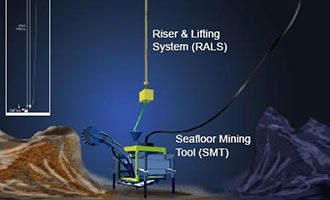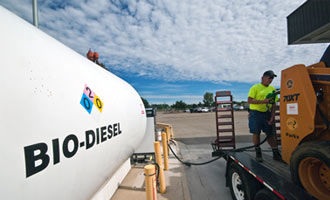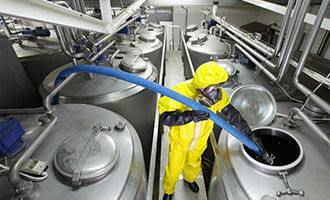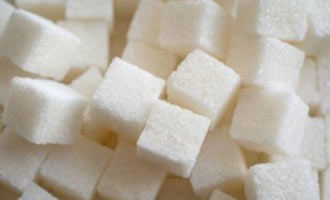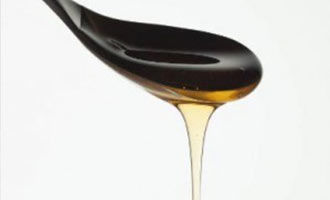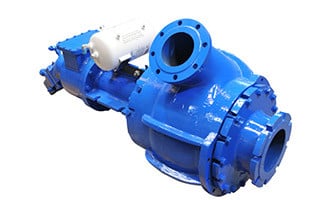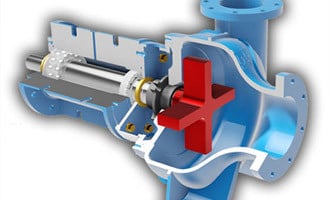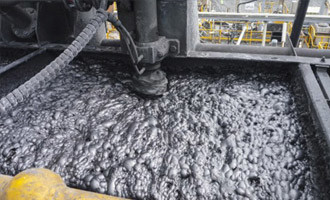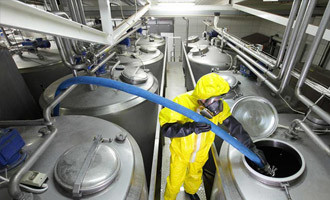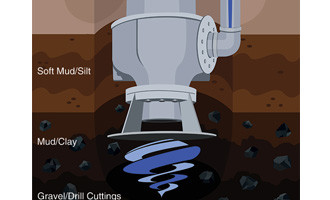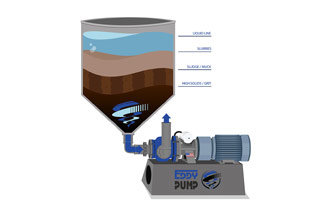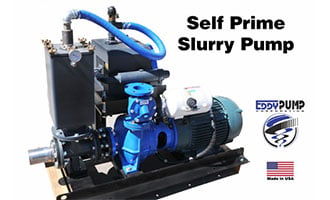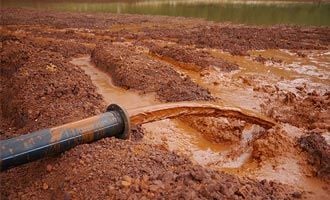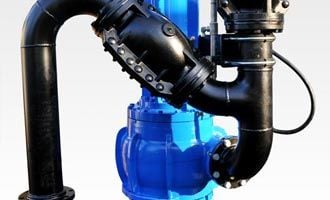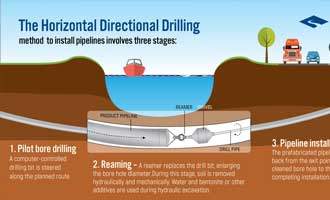Slurry Recirculation Pumps
Learn about some of the different industrial slurry recirculation applications and about the advantages of using an EDDY Pump to help recirculate and agitate the target material. Browse Our Slurry PumpsContact Us For Fast QuoteEDDY Recirculation pump with an extended bearing house used for drilling mud and cuttings recirculation
Slurry Recirculation Pump Applications
- Sludge Storage Mixing
- Keep Grit in Suspension
- Sump, Railcar, and Settling Tank Mixing
- Backflow Prevention
- Mining Froth Flotation
All industrial pumps need to withstand tough conditions, but few pieces of equipment experience quite as much abrasion and vibration as the slurry pump. Slurry pumps are designed to move the thickest mixtures and pass large pieces of debris without damage or wear on the pump. This is why the EDDY Pumps are so useful for recirculation pump purposes. No matter the slurry recirculation purpose, there’s likely a good way to use a slurry pump to tackle the task. These seven applications are some of the most common slurry and sludge recirculation uses across the various manufacturing, processing, industrial sectors, and other high-solids pumping applications.
The EDDY Pump’s open rotor design with high tolerances allow anything that will go into the intake to be passed through the discharge without issues. This allows the pump to pass more solids with less wear on critical pump parts which will lead to less maintenance, less downtime, and more profits.
Problems with Sludge Storage Mixing & Recirculation
Sludge is generated as a byproduct or required as a processing step in hundreds of different applications, from making livestock feed to dewatering construction sites. While settling tanks are commonly used to separate water from the suspended particulate that qualifies a mixture as sludge, eventually, that particulate needs to come out as well to empty these holding areas. Sludge mixing is also essential for the intermediary steps of wastewater treatment and feed production. Slurry pumps are a great choice for this sludge recirculation purpose since the open design of the cavity prevents clogging and internal wear.
Often times, when storing sludge in large settling or digester tanks, the material in these tanks need to be constantly in suspension for any number of reasons. These can be accomplished by using a submersible EDDY Pump to keep re-circulating the slurry throughout the tank, keeping the sediment thoroughly mixed within the tank. Additionally, valves can be installed in the EDDY Pump recirculation system to release the slurry through a separate discharge hose once a material threshold is met. This ensures that the entire process runs as smooth as possible keeping within regulatory standards for your industry.
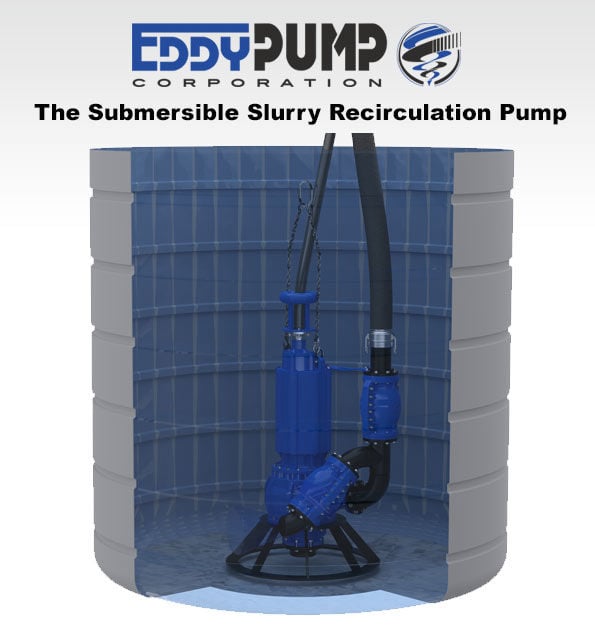
Trouble Keep Grit in Suspension
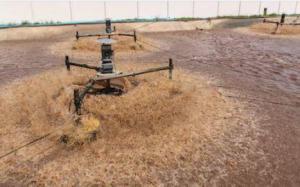
With various wastewater systems, it’s important to keep grit in suspension to allow it to be pumped further down the process line without settling at the bottom of any tank along the process. Recirculation pumps help this process by thoroughly mixing the solution containing grit, helping to prevent it from setting at the bottom of the tank which could cause issues if left unchecked.
Issues With Sump, Railcar, and Slurry Tank Mixing

Depending on the type of mixture, railcar slurries may be need to constantly be agitated. This can be accomplished in a number of ways, but a superior method for some applications may The use of EDDY Pumps to recirculate slurry helps to move the material around enough to keep the solids suspended and keep from settling to the bottom of the tank. If the material is sufficiently agitated, the easier and faster it is to pump and transport to the next destination.
Backflow Prevention Problems
Backflow means the undesirable reversal of flow of a liquid, gas, or suspended solid slurry into an unwanted area of the process; a slurry recirculation pump can be designed to keep this from happening. Points at which a slurry or suspended solids system connects with another system are called cross connections. Such connections occur commonly in home appliances such as clothes washers and dishwashers, but they must be carefully designed and installed to prevent backflow. Another common location for a backflow preventer is the connection of a fire sprinkler system to a water main, to prevent pressurized water from flowing from the fire suppression system into the public water supply.
Mining Froth Flotation Efficiency
Froth flotation used in mining is one of the most valuable ways of refining copper and other ores from low-grade materials. Not only is this separation method widely used in the mining and refining industries, but it’s also helpful in paper pulp manufacturing and fluctuation for wastewater treatment. Froth methods rely on both complete mixing of oil and acid additives that encourage particles to stick together and thorough agitation to generate plenty of turbulence. Slurry pumps installed in a recirculating position can provide both of these essential features without corroding due to exposure to the frothing additives.
Froth floatation pumping is also used to maximize bitumen production. To maximize output from the plant and to decrease inefficiencies involved with pumping bitumen froth, many of the currently employed centrifugal pumps must be improved. Concepts of pumping may include degassing the froth while pumping it by special secondary impellers, or using inducers that centrifuge the heavier water and bitumen from the air. The air pockets may also be collapsed by recirculating a percentage of the slurry from the discharge back to the eye of the impeller, or by injecting hot water at the suction.
EDDY Pump Equipment for Recirculation
EDDY Recirculation Slurry Pumps are specially designed pumps which are designed to accommodate a number of industrial industries not limited to mining, manufacturing, oil/gas drilling, and many more.
The EDDY Recirculation Slurry Pump is excellent for pumping and recirculating thick, sludgy material that will greatly help to keep solids suspended in sumps, holding tanks, or other types of vesicles.
The pump can be mounted vertically or horizontally depending on the particular setup or project needs, however, if the pump requires an extended bearing house, it can only be mounted vertically due to the extended shaft.
Order or Get Selection Help
Let our sales or engineering support help in your slurry pump and dredge equipment selection. Call (619) 258-7020
Why EDDY Pumps Are Better – Highlights
This video shows how EDDY Pump transports high slurry and abrasive materials. Featured dredge pump equipment includes the Remote Operated Subdredge, Diver Operated Pump and a Excavator Attachment Dredge Pump.
Why EDDY Pumps Are Better - Highlights
This video shows how EDDY Pump transports high slurry and abrasive materials. Featured dredge pump equipment includes the Remote Operated Subdredge, Diver Operated Pump and a Excavator Attachment Dredge Pump.




